Vaire-le-Grand to Besançon
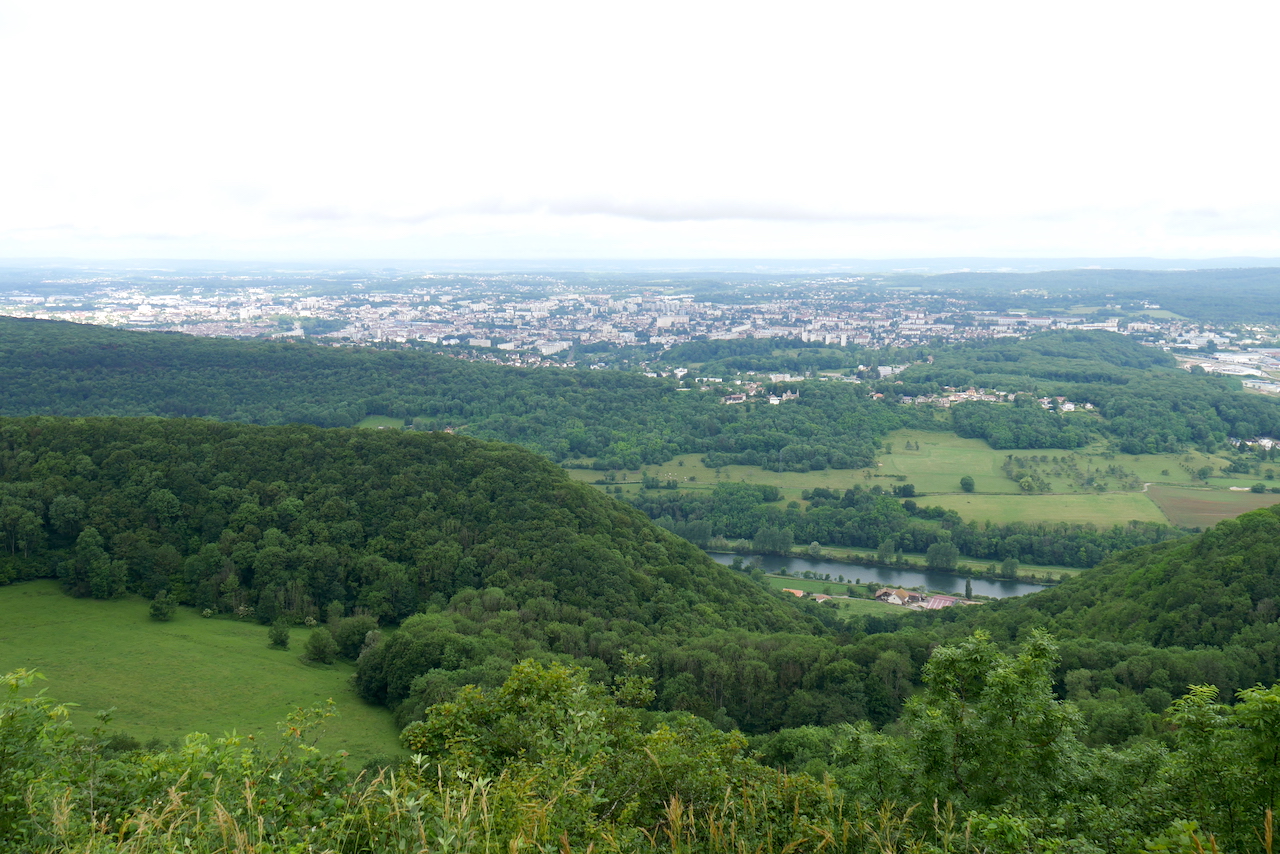
Bourgogne-Franche-Comté
5. Vaire-le-Grand to Besançon
Medium
5h
19km
+766m
-755m
Step
Embed this item to access it offline
At the start of your stopover you will follow the Arcier springs which supplied water to the town of Besançon as early as the Gallo-Roman period. You will go up to Montfaucon, a panoramic view of the Comtoise city awaits you there but also the history of the medieval fort and the 19th century fort.
The Chapelle des Buis, a place of pilgrimage for the bisontins, welcomes you with a Franciscan community.
You will go down to the old town and its rich heritage. The history of Saint Colomban passes through the prisons of King Thierry II in this capital of Sequoia.
The Chapelle des Buis, a place of pilgrimage for the bisontins, welcomes you with a Franciscan community.
You will go down to the old town and its rich heritage. The history of Saint Colomban passes through the prisons of King Thierry II in this capital of Sequoia.
7 points of interest
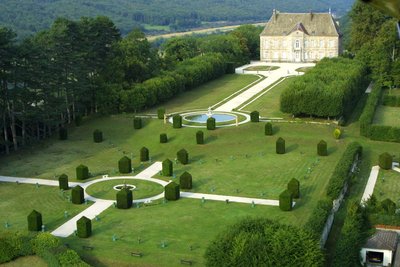
Vue aérienne du Château de Vaire-Arcier - Site internet du château de Vaire HistoricalCastle of Vaire-Arcier or Vaire-le-Grand
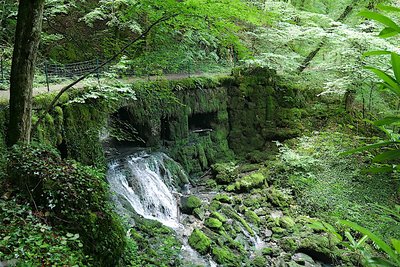
La source Bergerette à Arcier - Amis saint Colomban TouristThe sources of Arcier
Located on the Via Columbani you will discover the three emerging karstic springs that have supplied Besançon with drinking water since Roman times. Some vestiges of the Gallo-Roman works leading to the Comtoise city are still visible. The 12 kilometres of the aqueduct reach the Square Castan in the city centre.
For a long time, the springs have supplied water and hydraulic energy to some industrial activities on a vast site of about 7 hectares with: Château d'Arcier, chapel, mills, powder magazine, forges, paper mill, fish farm...
Today it is a place to stroll through lush vegetation. It is the favourite habitat of the Royal Milan.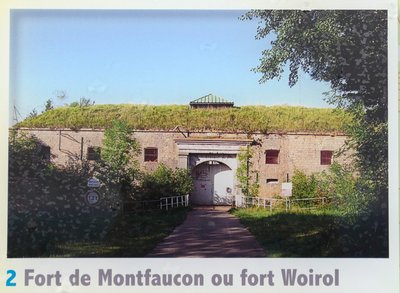
L’entrée du fort de Montfaucon. Entrée interdite - Panneau explicatif du site HistoricalMontfaucon Fort in Besançon
Property of the French Army, the Fort cannot be visited. It is part of the first phase of construction of the entrenched camp of Besançon, which was set up between 1870 and 1886. Located in the commune of Montfaucon, the fort is sometimes called Fort Neuf de Montfaucon because of the presence of the "Old Fort" close by. In 1887, following the Boulanger decree, it was given the patronymic of Major General Théophile Woirol, military commander of the place de Besançon from 1840 to 1848.
His mission was to hold the plain of Thise under his fire, to block infiltrations along the bisontinental bundle and to prohibit invasions by the Saône plateau.
Built in masonry between 1874 and 1878, following the "Séré de Rivières à massif central et batterie haute" type, it occupies the high point (617 m) of the ridge dominating the Thise plain to the west and the Saône-Bouclans plateau to the east. It was the only fort in the area to have a cast-iron armoured turret designed by Captain Mougin.
Property of the French army, it can't be visited.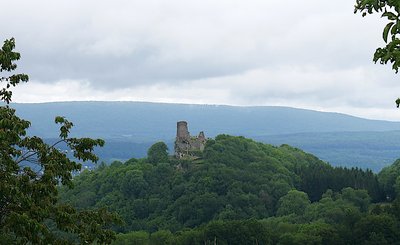
Château médiéval de Montfaucon vue de la Via Columbani - Amis saint Colomban HistoricalMontfaucon medieval castle
The fortified castle of Montfaucon was built on top of a rocky spur in the 11th century by the first lord of Montfaucon, Conon de Montfaucon, vassal of Count Renaud I of Burgundy and of the powerful archbishop of Besançon and prince of the Germanic Roman Empire Hugues I of Salins.
In the 13th century, a fortified village was founded next to the castle, with a parish church in 1311. The family of the Lords of Montfaucon was then one of the most powerful families of lords of the county of Burgundy and the county of Montbéliard throughout the Middle Ages and entered into the line of the counts of Montbéliard as early as the 12th century with Amédée II de Montfaucon.
In the 15th century, it was passed on as an inheritance to the Chalon-Arlay Prince d'Orange family and remained in their possession until the French Revolution.
The castle is abandoned permanently after the 10-year war (1634-1644) led by Richelieu (cardinal and prime minister of Louis XIII) to try to reconquer the County of Burgundy from the Habsburgs of Spain.
In 1984, the commune of Montfaucon bought the ruins of the castle and has since undertaken a major and long restoration project for tourism.
open house.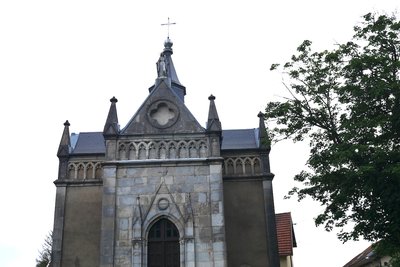
La façade de la Chapelle des Buis à Besançon - Amis saint Colomban TouristBoxwood Chapel in Besançon
The religious presence on the site dates back to the 5th century, notably when a hermit named Saint-Léonard took up residence in a cave near the chapel. A hermitage dating from the 13th century is attested, before the present chapel replaced it at an unknown date, but certainly between the 17th and 20th centuries. After the present chapel was built, it was deteriorated in 1815, and restored and enlarged in 1865 at the request of Cardinal Mathieu, Archbishop of Besançon.
In 1948, the bishop of Besançon called upon the Franciscans, whose provincial seat was then in Strasbourg. The Franciscan community is still present and welcomes pilgrims passing through on reservation.
Entrée de la Citadelle de Besançon - Amis saint Colomban HistoricalThe Vauban Citadel of Besançon
The building extends over twelve hectares in a place whose strategic importance is mentioned as early as 58 BC by Julius Caesar. The Citadel of Besançon was thus built on Mount Saint-Etienne, one of the hills that constitute a natural protection of the capital of Franche-Comté with Bregille, Chaudanne, Rosemont ... It overhangs the old town by more than 100 m and offers a wide view of Besançon and its surroundings. The city is located in a loop formed by a natural meander of the Doubs; the rocky spur on which the citadel stands closes the loop of the river and isolates the historic urban centre.
Mont Saint-Étienne was built in the 17th century by a military engineer, Vauban, who designed a military structure in March 1668.
The citadel and the city walls have been inscribed on the UNESCO World Heritage List since 7 July 2008.
Find out more Wikipedia
Today the citadel can be visited (for a fee) as well as the zoo. It is also a place of remembrance of the martyrs of the 1940-1945 war.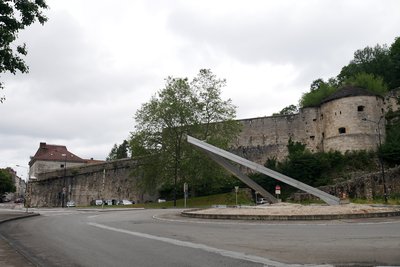
La Tour Notre-Dame construite à l’emplacement de l’ancien monastère fondé par Flavia - Amis saint Colomban St ColumbanNotre-Dame de Jussamoutier Abbey in Besançon
During the first half of the 7th century Saint Donat, godson of Saint Colomban and bishop of Besançon, founded a monastery of Saint Paul in the eponymous district of Besançon and wrote a rule of life for the women of the monastery of Jussamoutier founded by his mother Flavia. The Life of Saint Colomban bears witness to these foundations.
The Notre-Dame monastery was partially destroyed to build the ramparts and the Notre-Dame tower. It is possible to detect a plan of the church with a transept on the land register, current offices of the gendarmerie, next to the ramparts. Before the revolution the current buildings were those of the monastery of the Minimes.
The monastery of Saint-Paul, on the site of the church of Saint-Paul, in the north-east of the Doubs enclosure, has disappeared, it was built on the site of the Domus de Waldolène, the father of Donat. Recently during works at the entrance of the Lycée, Louis and Auguste Lumière, a Gallo-Roman mosaic was discovered and highlighted in situ, it was part of the Saint-Paul abbey and probably Waldolène's residence.
Saint Donat was buried in the Saint-Donat church adjoining the Saint-Paul church. After the destruction of the church of St. Donat, the relics and a statue of the bishop were transferred to the church of St. Maurice, located opposite the Granvelle Palace.
Description
From the church go towards the Doubs, take the Tervelles path which runs along the Doubs on the left bank. Turn right on the D323, entrance of Arcier at the car park, left on chemin des Sources.
- Turn right at the junction with a dirt road, first road on the left and then immediately right, cross the dirt road.
- Left at the crossroads with a dirt road, at the crossroads after the quarry on the right, direction Fort de Montfaucon, not to be visited, left chemin de la Redoute du fort de Montfaucon.
- Right for 150 metres for the view of Besançon and back on chemin de la Redoute, rue de la Vue des Alpes, right in the bend, rue d'Aigremont, right, rue du Belvédère.
- Fourth right in front of the church, rue des Fontaines, left, rue de la Fruitière, left, rue des Fontaines at the roundabout right strategic path, straight ahead, chemin de Chevriot Dessus, left chemin La Charade towards the housing estate, rue de Saint Fort, pass under the railway on the left, rue du Commerce, take the bridge to cross the road to Lausanne.
- Turn left on the exit ramp at route de Lausanne, go up towards the Chapelle des Buis, at La Bro on the left, Notre-Dame de la Libération, on the right towards the Chapelle des Buis, go down chemin de la Chapelle des Buis
- Crossroads Chemin de Malpas, first road on the left, first path with stairs on the right, Chemin de la Petite Creuse, crossroads at the edge of the Doubs on the right towards the town centre, Faubourg de Tarragnoz, after the roundabout take the stairs in front of the gendarmerie on the left Rue du Chapitre you will arrive at the Cathedral of Saint-Jean which you will go round with the stairs on the left to enter the building.
- Departure : Saint-Pierre and Saint-Paul Church, 20 rue de l'Église, 25 220 Vaire-le-Grand
- Arrival : Saint-Jean Cathedral, 10 rue de la Convention, 25 000 Besançon
- Towns crossed : Bourgogne-Franche-Comté
Altimetric profile
Transport
Bus Besançon, réseau Ginko
Report a problem or an error
If you have found an error on this page or if you have noticed any problems during your hike, please report them to us here:




